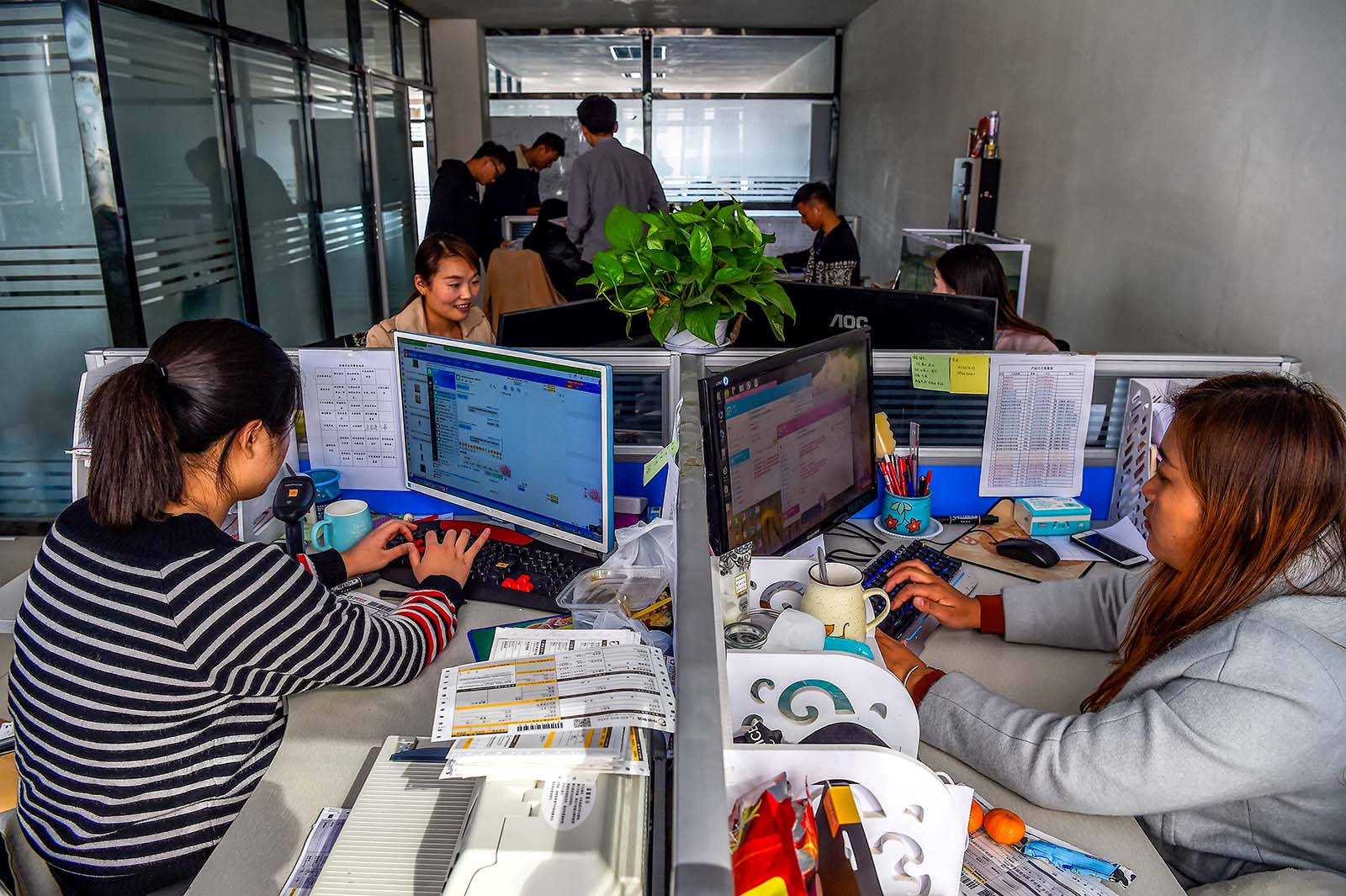Designing the Agile Organization in Asia

Staff of an e-commerce business work inside a office in Xuzhou, China. Only 14 percent of executives in China think their organization is change-agile today.
Photo: Chandan Khanna/AFP/Getty Images
The rallying cry from boardrooms is increasingly familiar: Agility, innovation and entrepreneurial spirit are the watchwords for growth. Businesses are alive to the pressures of disruption. The cycle of change—of new products, new channels and new operating models—has shortened dramatically.
The well-defined, yet sluggish, organizational model of fixed roles and rigid structures no longer works in Asia, or indeed elsewhere. Executives face contradictory impulses. How can they pursue a growth trajectory while simultaneously shaking up the business?
Mercer’s 2018 Global Talent Trends Study found only 14 percent of executives in China think their organization is change-agile today. Despite this, encouragingly, two in five have transformation metrics on their performance scorecard this year.
Our conversations with clients reveal a feeling that transformations never feel complete in an age of continuous change. As learnings soak in, new opportunities emerge. A vision of agility is a business imperative—and HR can’t sit on the sidelines if that vision is to become reality. But what might a change-agile organization look like?
Building a Change-Agile Company
Business units need to be nimble with independent budgets so they can get going, change direction or wind down—quickly. Relatively unbound from the corporate bureaucracy, these small teams monitor change and pivot as required. To support their work while remaining lightweight, these nimble units draw on a set of internal and external platforms, such as cloud services, pools of contingent workers, shared service centers, business partners and outsourcing providers.
As many as 97 percent of the executives in Asia are planning an organizational redesign this year, with a focus on flattening the organization and forming self-driven teams for increased collaboration.
Viewed from the top, the C-suite takes an investment portfolio approach to managing this dynamic structure as units plug in or unplug. Metrics to assess agility and innovation are part of an executive’s toolkit for monitoring performance. They are mindful that agility is a game of two halves: Current organizations are adept at generating new ideas and strategies, but execution often gets bogged down. It is therefore important to put emphasis on execution speed and set explicit goals for experimentation.
A culture of continuous regeneration will help organizations navigate uncertain waters—and HR can help steer the way.
Job boundaries will blur, at least in part. Armed with a set of objectives, fixed role descriptions give way to small team-based roles. Within these small teams, leaders can redeploy people based on strategic priorities and market demands. The future of work is work, not jobs—although this may face fierce opposition from governments and labor unions.
The trend toward team-based responsibilities has already started. For example, China’s BAT companies (Baidu, Alibaba and Tencent) have shifted their talent focus toward multidisciplinary talent with high flexibility and learning agility. Many Chinese media and digital businesses are starting to do the same.
The same fluidity will apply to organizational boundaries. Companies will continuously review and shift their approaches to managing capabilities in-house as well as through a web of partners, suppliers or joint ventures, where capabilities and outcomes matter more than who does the work or where the work is done.
A recent example from Mercer client experience is an Australian superannuation and financial services firm. The company’s small number of in-house employees manage an ecosystem of more than 700 people in partner organizations, including financial planners, investment managers and fund administrators, as well as digital marketing and analytics agencies.
Finally, agility is not for everyone—or, at least, not for every part of the organization. A dual operating model has emerged in many organizations, where some parts move rapidly to a digital business and operating model, and other areas, such as legal and compliance departments, transform at a slower pace to ensure consistency and risk management.
HR at the Helm
HR is an important partner in reaching these agility goals, and fast-adapting organizations will need their HR departments to develop their own strategic capability. Current organizational development roles within HR teams are an important starting point for this: Developing that expertise into a suitable set of HR practices is better. Processes such as career pathing, performance management and learning and development must all adapt to facilitate change.
The talent profile will evolve, too. An agile structure requires core leaders to shift between stable and nimble business units, turning the company’s mission into action and working alongside specialists. Individuals will move around based on ambition, cultivating the skills necessary to take on multiple roles. Training and incentives come into play to encourage a mind-set in which growth fueled by experimentation and innovation becomes the norm.
A culture of continuous regeneration will help organizations navigate uncertain waters; HR can help steer the way.
A version of this piece first appeared in Mercer’s HR2025 magazine.



